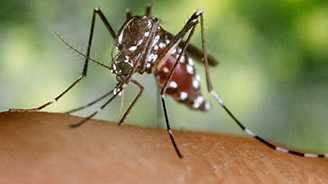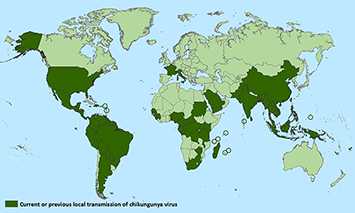Chikungunya (pronunciation: chik-en-gun-ye) virus is transmitted to people by mosquitoes. The most common symptoms of chikungunya virus infection are fever and joint pain. Other symptoms may include headache, muscle pain, joint swelling, or rash. Outbreaks have occurred in countries in Africa, Asia, Europe, and the Indian and Pacific Oceans. In late 2013, chikungunya virus was found for the first time in the Americas on islands in the Caribbean. There is a risk that the virus will be imported to new areas by infected travelers. There is no vaccine to prevent or medicine to treat chikungunya virus infection. Travelers can protect themselves by preventing mosquito bites. When traveling to countries with chikungunya virus, use insect repellent, wear long sleeves and pants, and stay in places with air conditioning or that use window and door screens.
Get Email Updates
To receive email updates about this page, enter your email address:
Chikungunya Virus Distribution
What's New
- Surveillance and Control of Aedes aegypti and Aedes albopictus in the United States
- Chikungunya Update for Clinicians – Medscape Commentary, Joanna Gaines, PhD, MPH, MA, CHES
- Differentiating Chikungunya From Dengue: A Clinical Challenge
For Travelers
- Page last reviewed: August 3, 2015
- Page last updated: August 29, 2017
- Content source:


 ShareCompartir
ShareCompartir


